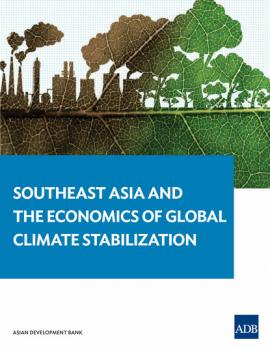ТОП просматриваемых книг сайта:
David A. Raitzer
Список книг автора David A. RaitzerАннотация
Climate change is a global concern of special relevance to Southeast Asia, a region that is both vulnerable to the effects of climate change and a rapidly increasing emitter of greenhouse gases (GHGs). This study focuses on five countries of Southeast Asia that collectively account for 90% of regional GHG emissions in recent years–Indonesia, Malaysia, the Philippines, Thailand, and Viet Nam. It applies two global dynamic economy–energy–environment models under an array of scenarios that reflect potential regimes for regulating global GHG emissions through 2050. The modeling identifies the potential economic costs of climate inaction for the region, how the countries can most efficiently achieve GHG emission mitigation, and the consequences of mitigation, both in terms of benefits and costs. Drawing on the modeling results, the study analyzes climate-related policies and identifies how further action can be taken to ensure low-carbon growth.
Аннотация
This publication aims to support impact evaluation in the transport sector by assessing what has been produced against what might be possible. It reviews 91 impact evaluations of transport interventions in developing countries, summarizes findings on outcomes, identifies evidence gaps, and proposes ways forward. Most of the studies reviewed find significant effects on at least one of the outcomes investigated. However, impact evaluation has given relatively little coverage to major areas of investment, such as urban and sustainable transportation, transport corridors, and efficiency enhancing measures. New methods and increasing openness of geospatial data provide scope to generate more innovative impact studies.
Аннотация
This report aims to support impact evaluation in the energy sector by assessing what has been produced against what might be possible. It reviews 85 impact evaluations of energy interventions in developing countries, summarizes findings on outcomes, identifies evidence gaps, and proposes ways forward. A majority of studies has so far focused on rural electrification and improved cookstoves, while most investments are in power generation and transmission. After considering the body of evidence available, directions and approaches are proposed for future impact evaluations to best contribute new evidence regarding the sector.



